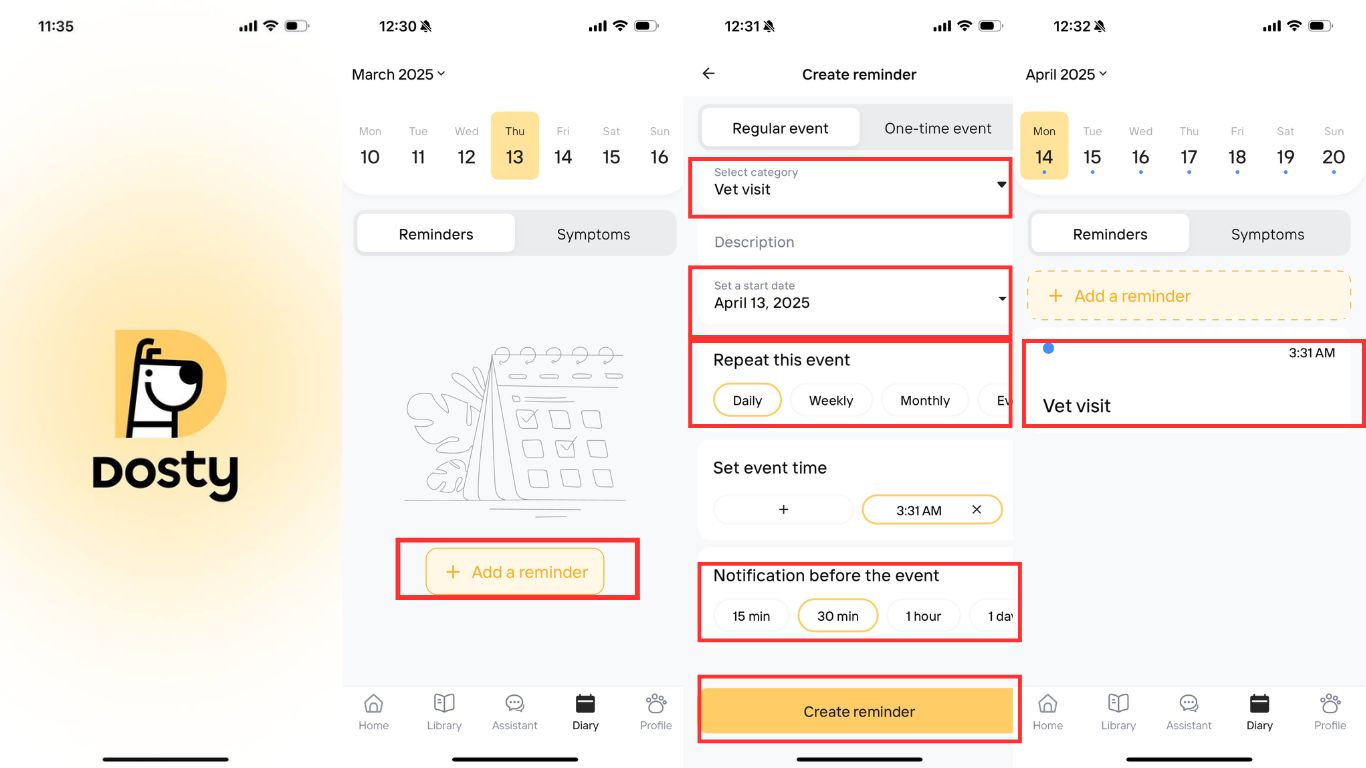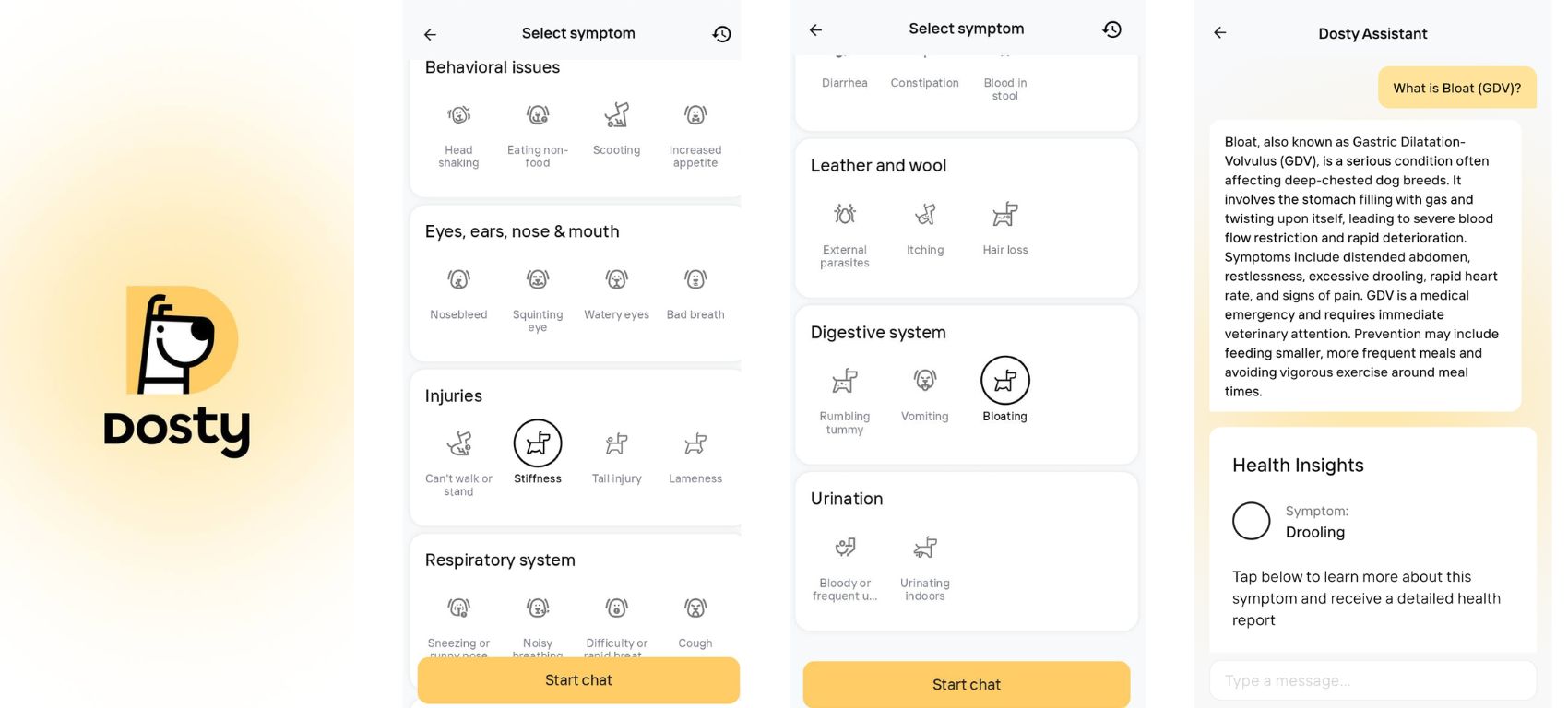On this page
How to Spot Parasites During Grooming?
Spotting parasites during grooming means closely checking your dog’s coat, skin, and behavior for evidence of fleas, ticks, lice, or mites. First, take a fine-tooth flea comb and comb through your dog’s fur in sections (make sure to do this around the neck, belly, and tail). Look for:
🔍 Small black things (flea dirt) – Looks like pepper flakes. Rub them on a damp paper towel, if they turn red, they’re flea droppings.
🔍 Active bugs – Fleas are small, reddish-brown, and quick. Ticks look like little gray or brown bumps glued on the body.
🔍 Reddish or itchy skin – May signify territories of parasite activity or allergic reactions.
🔍 Scabs, bite marks or small spots of bleeding – Usually symptoms of active feeding of parasites.
🔍 Abnormal behavior – Too much licking, chewing or scratching is often the first sign that something’s wrong.
Routine grooming is one of the best ways to detect these threats early, according to the American Veterinary Medical Association (AVMA).
Use your hands as much as grooming tools. Run your fingers against the grain to feel for small lumps or irregularities under the fur. If your dog tenses or reacts with discomfort when you touch specific areas, this may indicate irritation or where parasites have bitten. Groom in good light at all times and if you can’t tell what you’re looking at, use a magnifying glass.
Noticing weird spots, or scratching all the time while grooming❓
Dosty’s Symptom Checker allows you to diagnose skin problems such as parasites, itching or hair loss in seconds right from your phone.
What Parasites Can You Find While Grooming a Dog?
Fleas, ticks, lice, and mites are commonly found during grooming by pet owners. These external parasites stay on or in the dog’s coat and skin and can make the pet uncomfortable or cause infections, and even diseases.
Common Parasites You Can Spot While Grooming:
- Fleas – Tiny reddish-brown bugs that scuttle through the fur and frequently deposit flea dirt (black specks of waste).
- Ticks – Bigger than the others, gray to brown, and latch onto your skin to drink blood. These are usually small raised bumps.
- Lice – White or yellow spots located near the skin; slows and makes you itch intensely.
- Mites – Microscopic and typically invisible to the naked eye; they cause mange, ear infections or general irritation.
These pests are most active during warm months and in environments with grass, wooded areas or other animals. Even dogs who are kept indoors can be infected with parasites carried indoors on shoes, clothing or other pets.
Concerned about fleas, ticks or mites lurking in your dog’s coat❓
Dosty’s Grooming Library helps you troubleshoot parasites quickly with informative guides, pictures, and care steps specific to your dog’s breed.
How to Tell If Your Dog Has Fleas or Ticks?
They may be seen crawling on the body, and checking for them requires careful brushing and observation of the hairs, skin, and behavior in grooming.
🔍 Signs of Fleas:
- Fleas can be visible to the naked eye; they appear as small, fast-moving, dark brown insects on the surface of the skin.
- Flea dirt: Tiny black specks on the skin that turn red when moistened - that is flea feces.
- Itching or scratching: The scratching is often accompanied by biting at their lower back or tail base if the
🔍 Signs of Ticks:
- Attached ticks: Embedded in the skin, commonly near the ears or between the toes.
- Small bump: Usually sensed before it is seen, especially in thick-coated breeds.
- Reddish gluttonous body: An engorged tick has fed and should be a shade of grey or brown.
Flicking through with a fine-tooth flea comb or magnifying lens makes it possible to pick out live fleas and nitrate-backed ticks.
Explore blogs, breed insights, and expert advice on Dosty.co!
Where Should You Check for Parasites on Your Dog?
Parasites love to go to places where they find warm skin, fluffy skin and where it is protected from light or scratching. Focus on hidden zones that usually get overlooked while grooming
🟡 Ears and Behind the Ears – Using your fingers, gently pull back the ear flaps. Fleas and ticks thrive in the warmth and the dark.
🟡 Neck and Under the Collar – Always take the collar off and look for skin check. Ticks tend to latch on in places collars can trap heat.
🟡 Between Toes and Paw Pads – Spread the toes apart and check in between them. Here it is easy for ticks to burrow into the skin.
🟡 Underarms and Groin – These places are warm, wet, and hard for dogs to access – ideal spots for parasites.
🟡 Tail Base and Belly – Lift tail to check tail base. Fleas like to congregate here and leave flea dirt or red bumps.
Gently rub your hands on the dog's body both with the direction of the fur and against the direction of the fur. Feel for bumps, flakes or slight variations in skin texture, which could indicate a tick embedded in a pet or scab from a pet scratching.
_1744975428.webp)
What Are the Signs of Parasites on a Dog’s Skin?
Parasites aren’t always visible, they are very active, and their activity can leave distinct traces on your dog’s skin. These signs are often seen in patches or a localized area during grooming.
🔴 Persistent scratching and licking – Excessive grooming behavior can be a sign of skin irritation due to fleas, mites, or lice.
🔴 Redness and rashes – Particularly around the stomach, inner thighs, and armpits. Redness often occurs before scabbing or hair loss.
🔴 Scabs, sores, and bite marks – These are caused from scratching or feeding from the parasite. Sometimes they can trigger bacterial infections.
🔴 Hair loss or thinning fur – Mites (like Demodex or Sarcoptes) may cause hair loss or thinning patches.
🔴 Stinky or oily skin – A bacteria infection triggered by the insects can produce a bad smell.
Parasite signs often become apparent before parasites themselves are – so grooming is the best time to check for them, according to PetMD.
How to Safely Remove Parasites From Your Dog?
Discovering fleas or ticks during grooming means they must be removed safely and thoroughly. Proper technique is important: Incomplete removal or the use of improper tools can lead to irritation, infection or the deposition of parts of the parasite in the skin. Always clean and disinfect the area afterward, and watch for redness, swelling or pain.
✅ Flea Removal Steps:
- You can use a flea comb to remove fleas and flea dirt from fur. Soak the comb in warm, soapy water between strokes to kill them.
- Wash your dog with a vet-recommended flea shampoo that kills active fleas. Steer clear of human shampoos, they can be toxic.
- Cleaning your home by vacuuming floors and washing pet bedding, as well as treating carpets with flea spray. They don't just lay eggs on your pet; fleas lay eggs in the environment.
- Consult your veterinarian, and start monthly flea preventives.
Skipping or delaying vet visits can lead to missed early signs of serious issues❗
With Dosty, you can schedule routine checkups, set custom reminders, and track health milestones, all in one place.
📲 Download Dosty and keep your vet visits right on track.

✅ Tick Removal Steps:
- Use pointy tweezers, or a tick-removal tool, not your fingers.
- Pull upward slowly and steadily straight out from the skin.
- Do not twist or jerk, which might cause the head to remain embedded.
- Afterward, disinfect the area with antiseptic.
- Wrap the tick in tape or put it in alcohol, and toss it in the trash. Do not crush it between your fingers.
Once the site is clear, keep an eye on it for redness, swelling, or pus, which can indicate infection. If your dog appears listless or develops a fever following the removal of a tick, take him to a vet immediately.
FAQs About Spotting Parasites During Grooming
1. Can I see fleas and ticks during grooming?
Yes, fleas and ticks with good lighting and the right tools are visible to the naked eye.
2. Do mites show visible signs?
No, mites are too small to see but make skin itchy, redden it and cause hair loss.
3. Should I check my indoor dog for parasites?
Yes, parasites can enter the home, and they can be brought in by shoes, clothing and transpired pets.
4. Does flea dirt always indicate an infestation?
Yes, flea dirt indicates that fleas are feeding and breeding on your dog.
5. Will human shampoo end flea treatment?
No, use only veterinarian approved flea treatments that are made for dogs.
Conclusion – Grooming Is the First Step to Catching Parasites Early
Routine grooming isn’t just for coat care, it’s an important time to catch parasites before you get an illness. By routinely examining the ears, paws, belly and in between those hard-to-reach areas, you can detect fleas, ticks or signs of mites in their formative stages.”
By identifying issues during grooming that are related to skin health, coat condition, and behavior, we can intervene sooner and achieve a more positive outcome. Add monthly parasite prevention to grooming, and you’ll be well on your way to reducing your dog’s chances of discomfort and disease.
👉 Detect parasites early and stay on track with the Dosty app!



